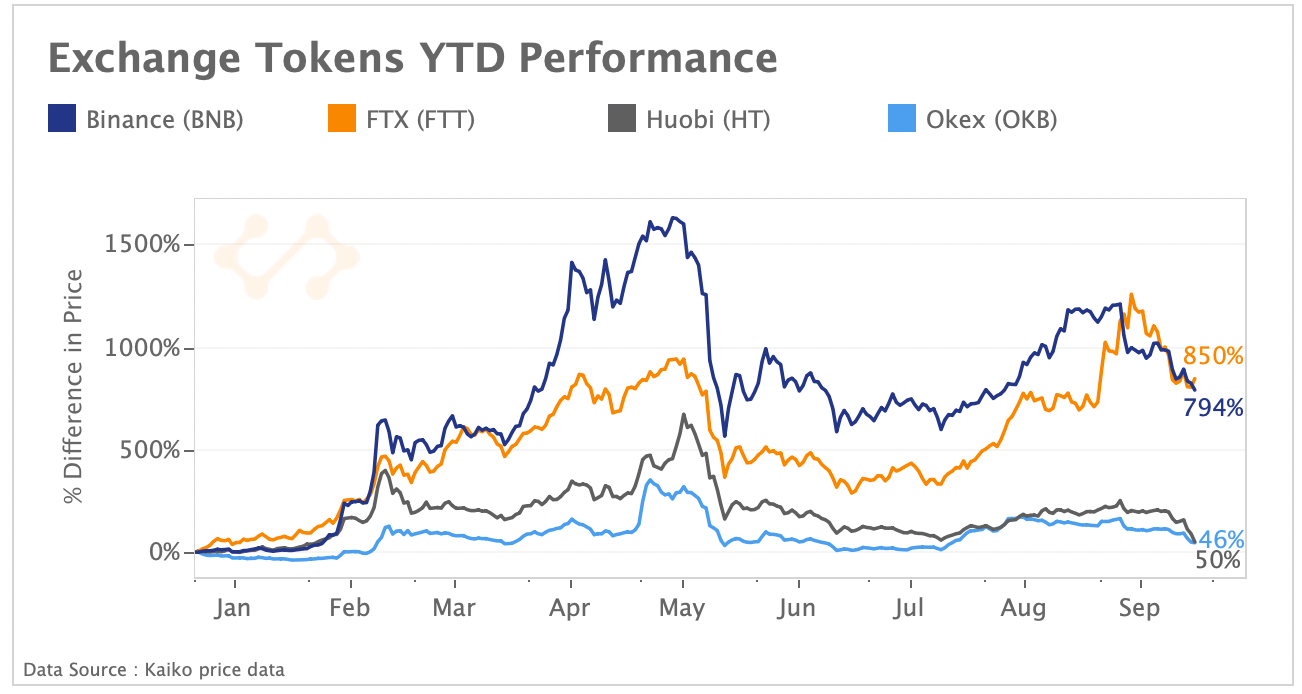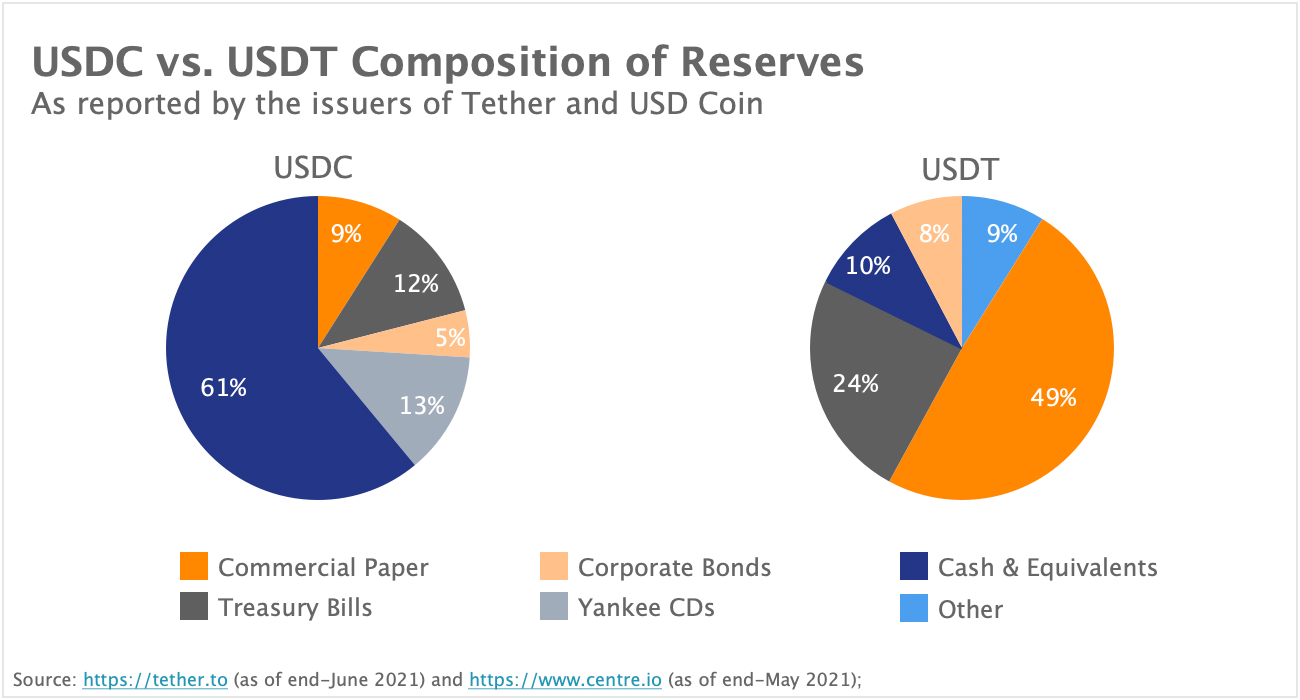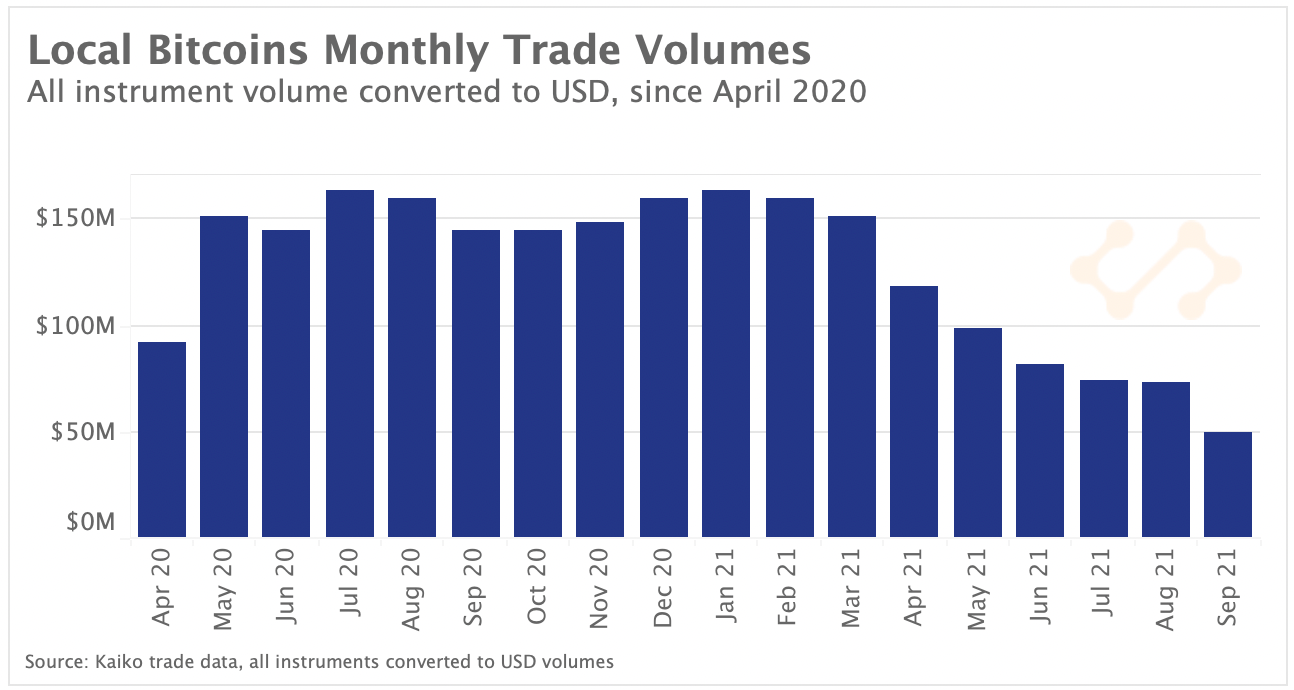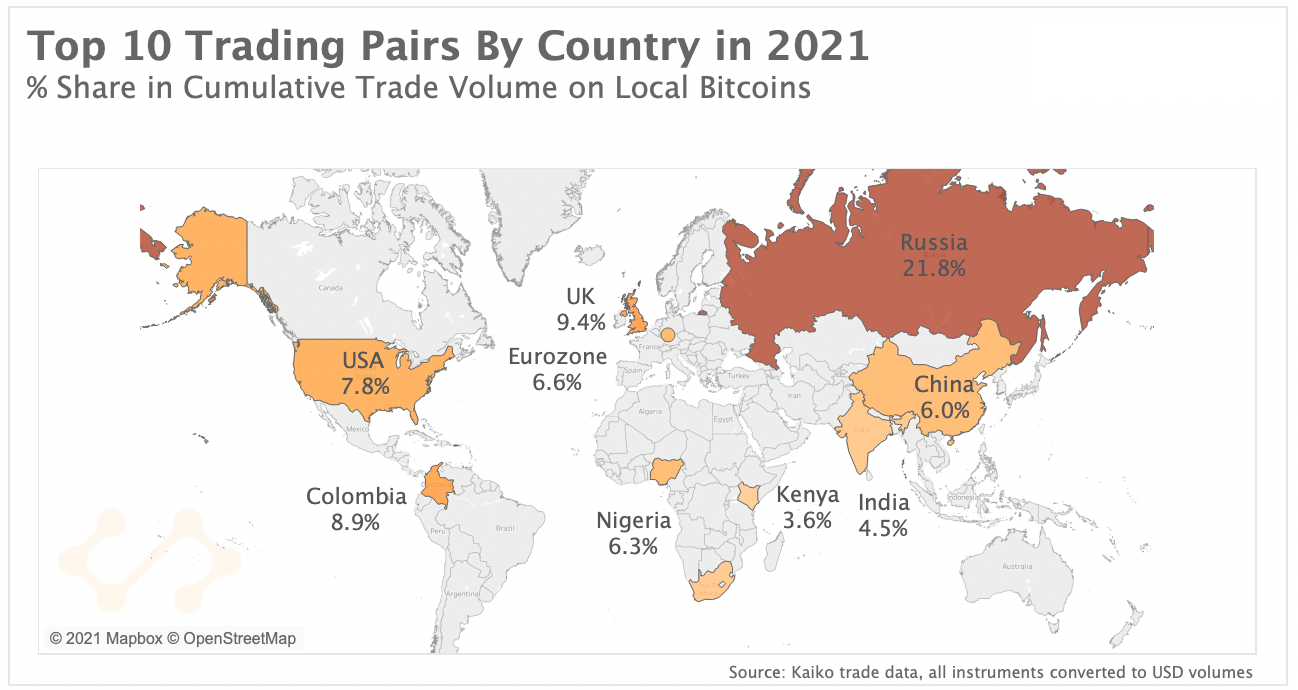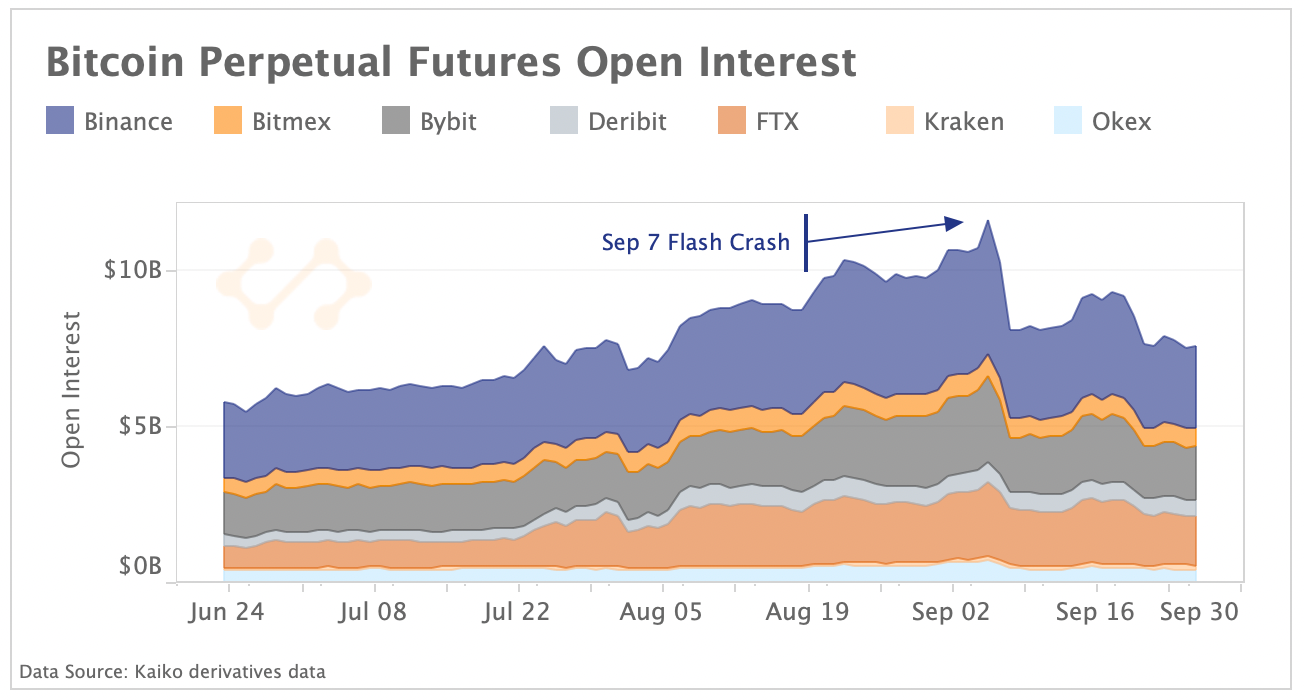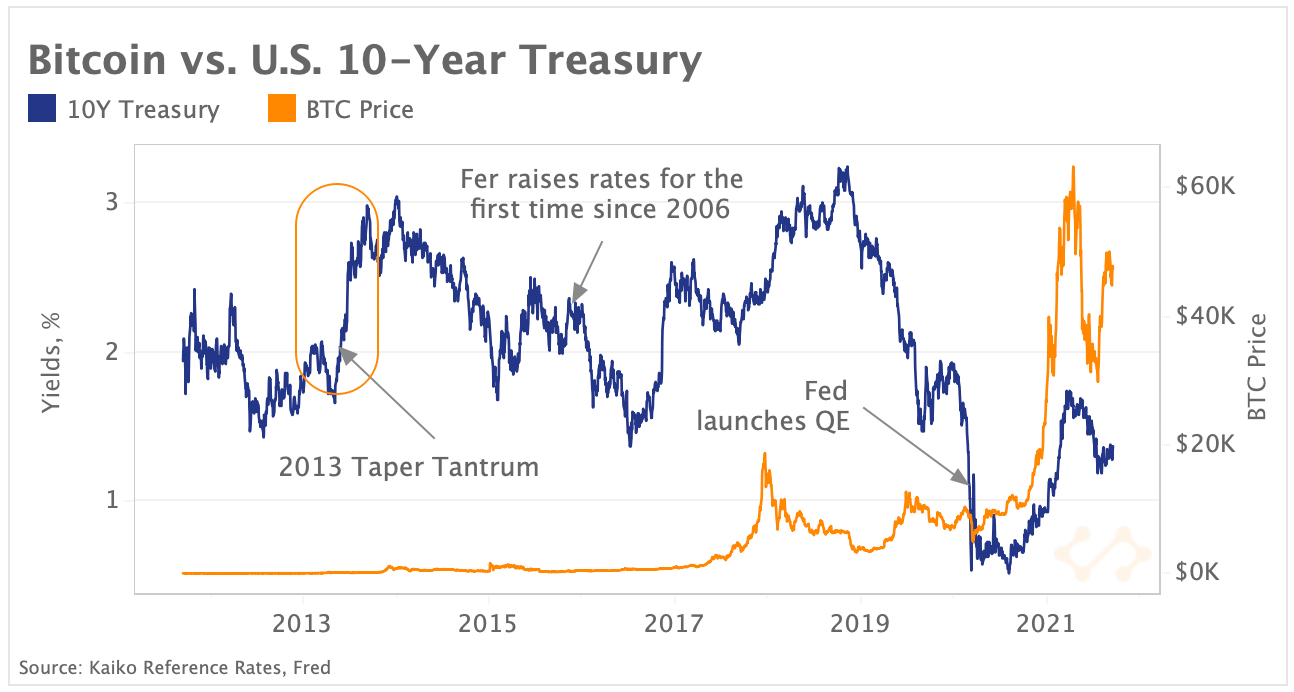A summarizing review of what has been happening at the crypto markets of the past week. A look at trending sectors, liquidity, volatility, spreads and more. The weekly report in cooperation with market data provider Kaiko.
The last 7 days in cryptocurrency markets:
- Price Movements: Another crypto ban in China caused markets to temporarily dip before stabilizing Sunday.
- Volume Dynamics: Peer-to-peer exchanges like LocalBitcoins are facing growing competition from centralized exchanges.
- Order Book Liquidity: Spreads have been more volatile in September compared with the summer months.
- Derivatives:Open interest for Bitcoin perpetual futures dropped following the latest bout of volatility.
- Macro Trends: As the Fed prepares to start tapering, we take a look at U.S. Treasury Yields vs. Bitcoin.
Another China ban
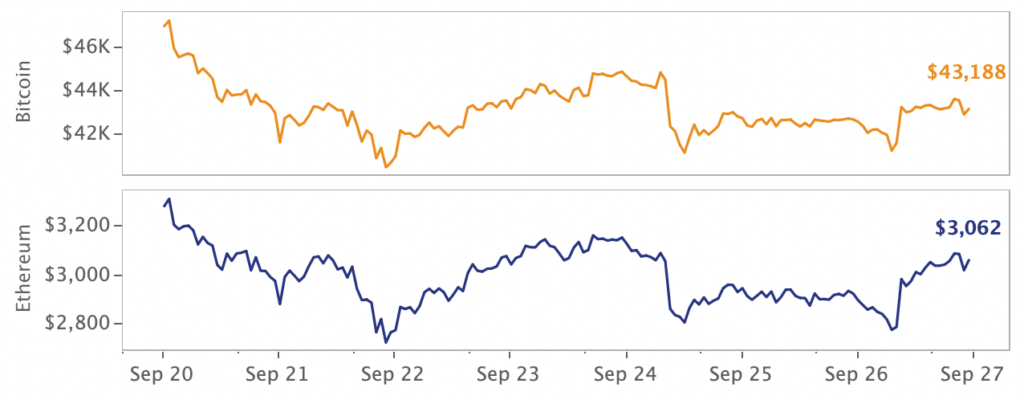
It seems every few months a new ban comes out of China causing temporary market jitters. This one could very well be the last, though, as China for the first time declared any transaction involving cryptocurrencies illegal. Cryptocurrency markets instantly reacted to the news, with Bitcoin dropping $4k and Ethereum dropping $300 in a matter of hours. However, as we were quoted in Bloomberg, “News out of China definitely impacts markets because it can shake market sentiment, but the actual effect of another Chinese ban has minimal impact on underlying market structure at this point."
This is because the majority of trading activity on centralized exchanges has shifted overseas since the 2017 crackdown, which banned exchanges like Huobi, Okex, and Binance from operating in the country. The new policy will mostly target the over-the-counter desks of these exchanges, which could definitely have an effect on global centralized market structure, although it remains unclear how large it will be. Markets stabilized and rebounded slightly by Sunday night.
Exchange tokens plunge following China ban
Cryptocurrency exchange-issued tokens have steadily captured investor attention over the past few years. Exchange tokens enable holders to benefit from lower transaction fees, vote on new coin listings, earn passive staking rewards, and of course bet on the exchange’s success as a business. Above, we chart YTD returns of the native tokens issued by Binance, FTX, Huobi and Okex.
Binance and FTX’s tokens have surged 794% and 850%, respectively, following a year of hyper growth. FTT, the token issued by FTX, recently broke an all-time high of $79 following the exchange’s acquisition of regulated derivatives platform LedgerX, increasingly audacious marketing initiatives, and launch of an NFT platform. Binance’s BNB peaked in May but has trended downwards since global regulators began cracking down on the exchange this past summer. Binance, Okex and Huobi's token YTD returns are still well in-the-green, but all three crashed precipitously on Friday following China's ban. Huobi Token is down 35% over the past week, Binance is down 4% and Okex is down 11%, which suggests investors think the ban could affect profitability. FTX's FTT token survived the FUD and is up 6%.
Tether (USDT) remains more volatile than USD Coin (USDC)
The stablecoin market has grown exponentially since the start of the 2020 crypto bull run thanks to their surging use in decentralized finance and centralized derivatives and spot markets. Stablecoins are pegged one-to-one to a reserve asset, in this case the U.S. Dollar, and typically issued by centralized organizations. However, during periods of market volatility their price can diverge from their USD peg due to sudden changes in supply and demand. Above, we chart the 30-Day volatility of the two largest stablecoins by market cap, Tether’s USDT (current circulating supply of 69 billion) and Circle’s USD Coin (current supply of 31 billion). We observe that volatility has been on a steady downward trend over the past year, although USDT remains more volatile than USDC despite boasting a larger supply and higher liquidity.
This past week, stablecoins have come under intense fire from regulators, with the U.S. Treasury announcing plans to investigate urgent risks posed by stablecoins to the U.S. financial system. The biggest concerns involve the composition of reserves of issuing organizations, which have historically lacked transparency. Below, we chart the composition of USDC and USDT reserves as reported by Circle and Tether.
Circle holds the majority of its reserves (61%) in cash and bank deposits compared with only 10% for Tether. Commercial papers accounted for almost half of USDT reserves (49%) and just 9% of USDC's reserves. Commercial papers are short-term unsecured debt issued by corporations and are seen as less reliable and riskier than cash. This makes Tether more exposed to global commercial paper market volatility (such as what happened with Evergrande), which could potentially result in insufficient reserves in the event of a "bank run".
LocalBitcoins sees drop in trade volume
Peer-to-peer exchanges were some of the earliest types of platforms allowing traders to buy and sell Bitcoin directly with fiat currencies without the need for centralized onboarding or KYC procedures. LocalBitcoins was founded in 2012 and today is one of the largest P2P exchanges, offering more than 160 Bitcoin fiat-quoted pairs. The exchange is particularly popular in developing countries relying on remittances and lacking strong banking infrastructure. Above, we chart monthly volume over the past year and can observe that activity increased by 74% between April and December 2020; however, volumes have since declined.
The decrease could partly be explained by competition from centralized exchanges such as Binance and Coinbase which increasingly offer a higher variety of fiat trading pairs. Centralized exchanges also offer better liquidity and lower prices—the BTC-USD pair trades on average 3.8% higher on LocalBitcoins compared with Coinbase. Chainalysis’ recent geography report further backs this trend, reporting that centralized exchanges account for more on-chain value transfers.
To better understand the global use of P2P exchanges, we analyze the geographic distribution of trade volume by fiat quote currency. Below, we chart the share of cumulative trade volume over the past year.
We can observe that the top ranking localities on LocalBitcoins are Russia (22%), the U.K. (9.4%), the U.S. (7.8%), Eurozone (6.6%), and China (6%). The total share of developed countries remains relatively low with the Eurozone, the U.K and the U.S. accounting for around 18% of total trades. The trends confirm that the majority of LocalBitcoins volume occurs in countries that rank lower in economic freedom, according to the Global Economic Freedom index.
Open interest declines following ongoing volatility
Ever since the September 7th flash crash which resulted in billions in liquidations, open interest for Bitcoin perpetual futures has failed to break previous highs reached immediately before the crash. Open interest dropped even further last Friday following news of China's crypto ban, which saw Bitcoin crash $4k in a matter of hours. Approximately $1B in open interest was wiped out, smaller than the +$4B early this month. Open interest today rests near early August levels, which suggests traders are more cautious and de-leveraging their positions in anticipation of further volatility.
For the past few weeks, funding rates for Bitcoin perpetual futures have been in neutral territory, hovering just above 0% on most derivatives exchanges. Last week's market volatility caused funding rates to drop into negative territory, typically a bearish sign for markets. Most of the shift happened before Friday's China ban, allowing markets to recover over the weekend. Binance and Bybit's funding rates now hover just below .01%, a sign that markets have stabilized.
How will Bitcoin fare in a rising rates environment?
The Fed moved closer to scaling down its emergency monetary policy stimulus at last week’s September Federal Open Market Committee meeting. The U.S. central bank is expected to start tapering its $120bn monthly bond purchases by year-end, while the first rate hike is now predicted as soon as 2022. Above, we chart Bitcoin’s price along with 10-year U.S. Treasury yields to better understand how the crypto asset will perform in a rising-rate environment. Treasury yields move inversely to their prices and the end of the Fed’s quantitative easing program along with a forthcoming increase in interest rates could put upwards pressure on yields.
Since 2020, Bitcoin has moved in line with treasury yields. It is unclear however what the impact of rising yields and falling risk appetite will have on Bitcoin over the next few months. Rising interest rates typically impact investments in growth stocks, which have been a major beneficiary of central bank policy over the past year. The last “Taper Tantrum” in 2013 caused yields to shoot up 100bps and equities to sell-off, which had virtually no impact on the price of Bitcoin. The past year’s trend suggests that markets are increasingly intertwined and a shift in U.S. monetary policy will have a much stronger impact on crypto markets this time around.


